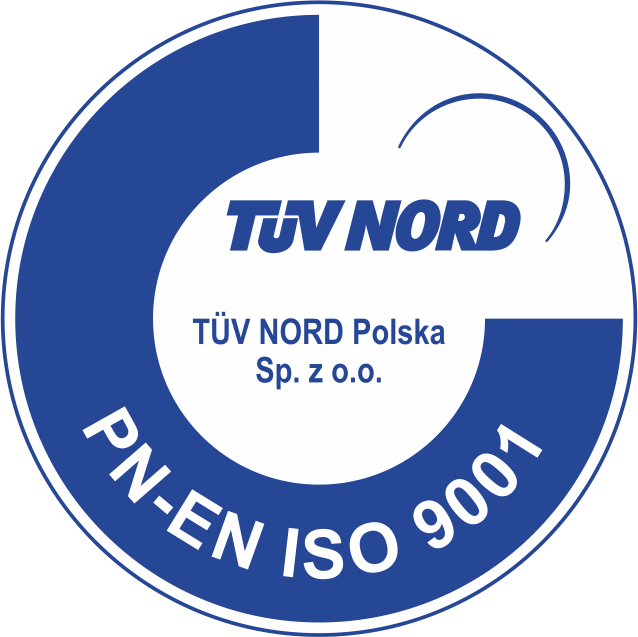How to Prepare for Mandatory E-Invoices?
On this page, you will find important news related to the National E-Invoicing System (KSeF) as well as information about implementation dates. We regularly publish articles and explanations to provide you with a full understanding and smooth transition to the new system. With these insights, your company will bge able to consciously and effectively harness the opportunities that the National E-Invoicing System presents.
What is KSeF?
The National E-Invoicing System is a solution that enables the issuance and receipt of structured electronic invoices. Since January 1, 2022, this system has been introduced in Poland as a voluntary solution, with the eventual goal of becoming mandatory. Poland is set to become the fourth EU country, following Italy, Spain, and Portugal, to implement such a solution.
KSeF was created with the aim of modernizing various aspects of invoicing. Invoicing processes will be significantly streamlined, resulting in faster and more efficient generation and transmission of invoices. A unified e-invoice format will simplify transaction documentation, reducing potential errors and facilitating invoice processing and archiving. All these changes support the fight against VAT fraud while laying the foundation for better control and supervision over business transactions.
When Will E-Invoices Become Mandatory?
Expected Implementation Dates for Mandatory KSeF:
- February 1, 2026 – for companies that achieved turnover above 200 million PLN in the previous tax year
- April 1, 2026 – for all other entrepreneurs.
getsix® is preparing its clients for e-invoice implementation. We have tailored solutions depending on the size of your company and the industry you operate in.
What is a Structured Invoice?
A structured invoice is an invoice issued using the National E-Invoicing System along with an assigned identifier number for that invoice within the system. Invoices within the e-Invoicing system must be filled out according to the requirements specified in the law for a given case.
A structured invoice takes the format of XML, and the complete logical structure of the e-Invoice is published in the Central Repository of Electronic Document Patterns (CRWDE).
It's worth noting that in KSeF, it is not possible to attach attachments to invoices in the traditional way. If the invoice issuer deems that additional documentation needs to be attached, they can include a link to it in the invoice content. This allows the recipient to access the required information.
Currently, structured invoices are one of the acceptable forms of invoicing in circulation, alongside paper and electronic invoices. With the implementation of the National E-Invoicing System, issuing structured invoices will become a taxpayer obligation.
Taxpayers subject to the obligation of issuing e-invoices who begin implementing the system in their companies earlier will be able to smoothly and lawfully transition to e-invoicing. Proactive action will help avoid problems associated with sudden adaptation to new requirements and ensure efficient management of financial documentation.
Key Dates in the National E-Invoicing System Implementation Process
2026
April 1, 2026
Mandatory KSeF
Mandatory system for all entrepreneurs.
February 1, 2026
Mandatory KSeF
Mandatory system for companies that achieved turnover above 200 million PLN in the previous tax year.
September 1, 2023
Second Version of e-Invoice
Logical structure FA(2) will replace the existing logical structure FA(1).
2023
June 16, 2023
Passing of legislation by the Sejm and submission for Senate review.
June 17, 2022
Approval of the European Union Council for the introduction of electronic invoicing obligation in Poland from January 1, 2024.
2022
April 7, 2022
Release of the test version of the Taxpayer Application KSeF.
January 1, 2022
Voluntary KSeF
- Introduction of KSeF as a voluntary solution.
- Existing logical structure of e-Invoice FA(1) applies.
Benefits of Implementing KSeF
Implementing the National E-Invoicing System (KSeF) brings various tax benefits that significantly facilitate business operations. First and foremost, the basic VAT refund period has been reduced from 60 to 40 days, accelerating payment returns for enterprises. Additionally, KSeF introduces simplifications in issuing and settling corrective invoices in the minus direction, and excludes the need to report them in JPK_FA and JPK_VAT RR. This reduces administrative burdens for companies. Moreover, the use of e-invoices eliminates the need for duplicate invoice issuance, reducing the risk of document loss or damage. Standardizing e-invoice format contributes to streamlined accounting processes and improved communication between business entities. With these enhancements, entrepreneurs can focus on business development while enjoying increased tax benefits.
The National E-Invoicing System (KSeF) offers not only tax advantages but also business benefits, particularly in terms of transaction security. With this system, we can ensure that the invoice reaches the recipient, and its content can be easily verified directly within KSeF. Furthermore, through document standardization, e-invoices are generated in a specific format and structure, enabling real-time access. Automation of e-invoice circulation between taxpayers and their accounting processes enhances business operations. Importantly, using KSeF eliminates the need to incur costs associated with archiving e-invoices, as the system stores them for 10 years. Such solutions enable enterprises to efficiently manage their finances and enhance transaction security.
How can getsix® Help with KSeF Changes?
We offer comprehensive e-invoicing solutions.
Our solution for KSeF preparation is tailored to your company's size and industry. To receive a complete offer, please contact us.
One of our proposed solutions is the implementation of the ERP Module of Microsoft Dynamics 365 Business Central (formerly Microsoft Dynamics NAV). If you choose this solution, our team of experts will comprehensively adapt the implementation of Microsoft Business Central to integrate with the National E-Invoicing System, ensuring it perfectly fits our clients' individual needs. Through system integration, numerous key accounting processes can be streamlined and automated.
Learn more about integration with Microsoft Business Central »
Implementing Microsoft Business Central brings multiple benefits to enterprises, including process integration, easy cloud data access, task automation, rich reporting and analysis, scalability, enhanced efficiency, and data security. This improves financial management, increases efficiency, and enables more informed business decisions.





















